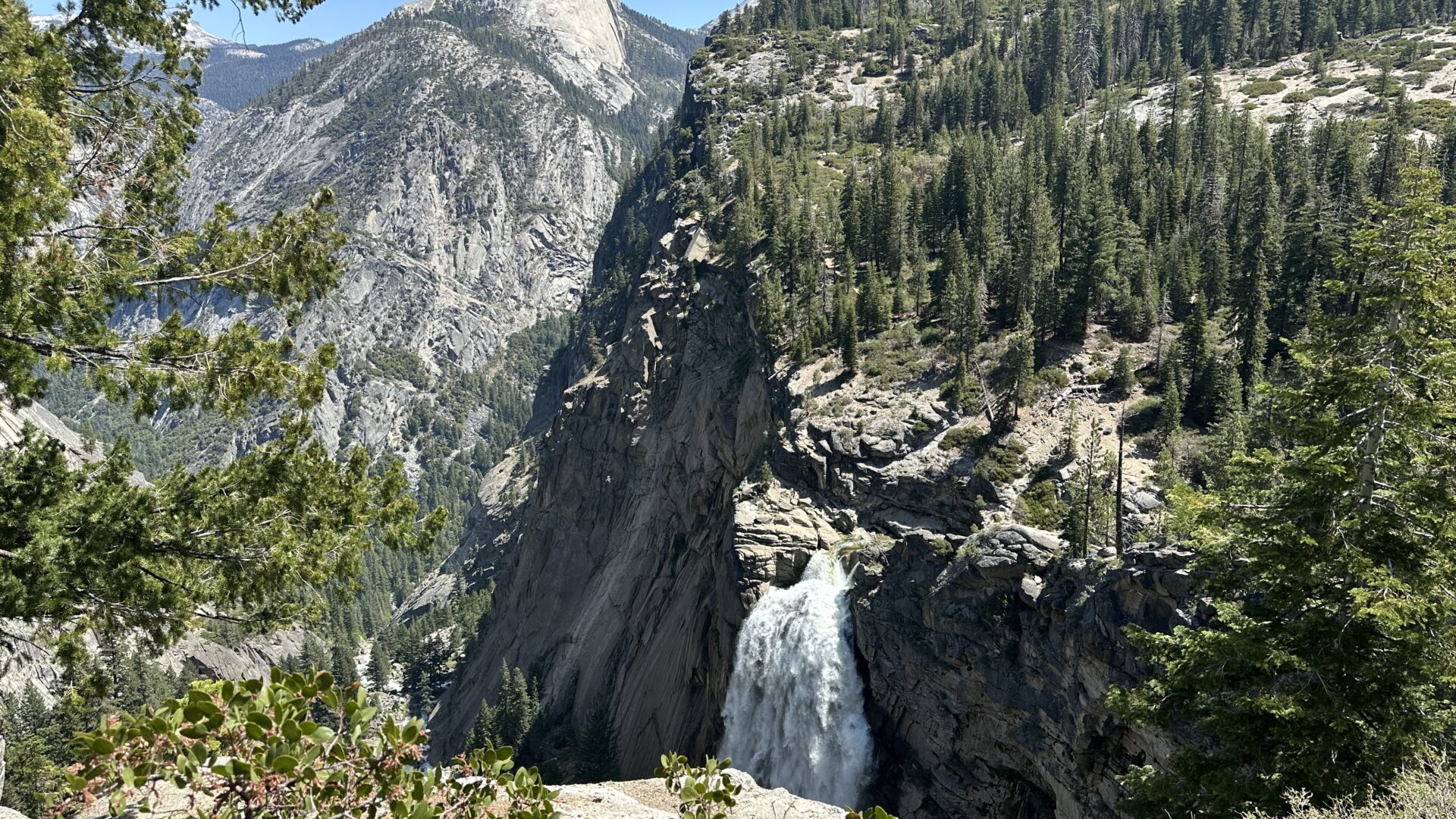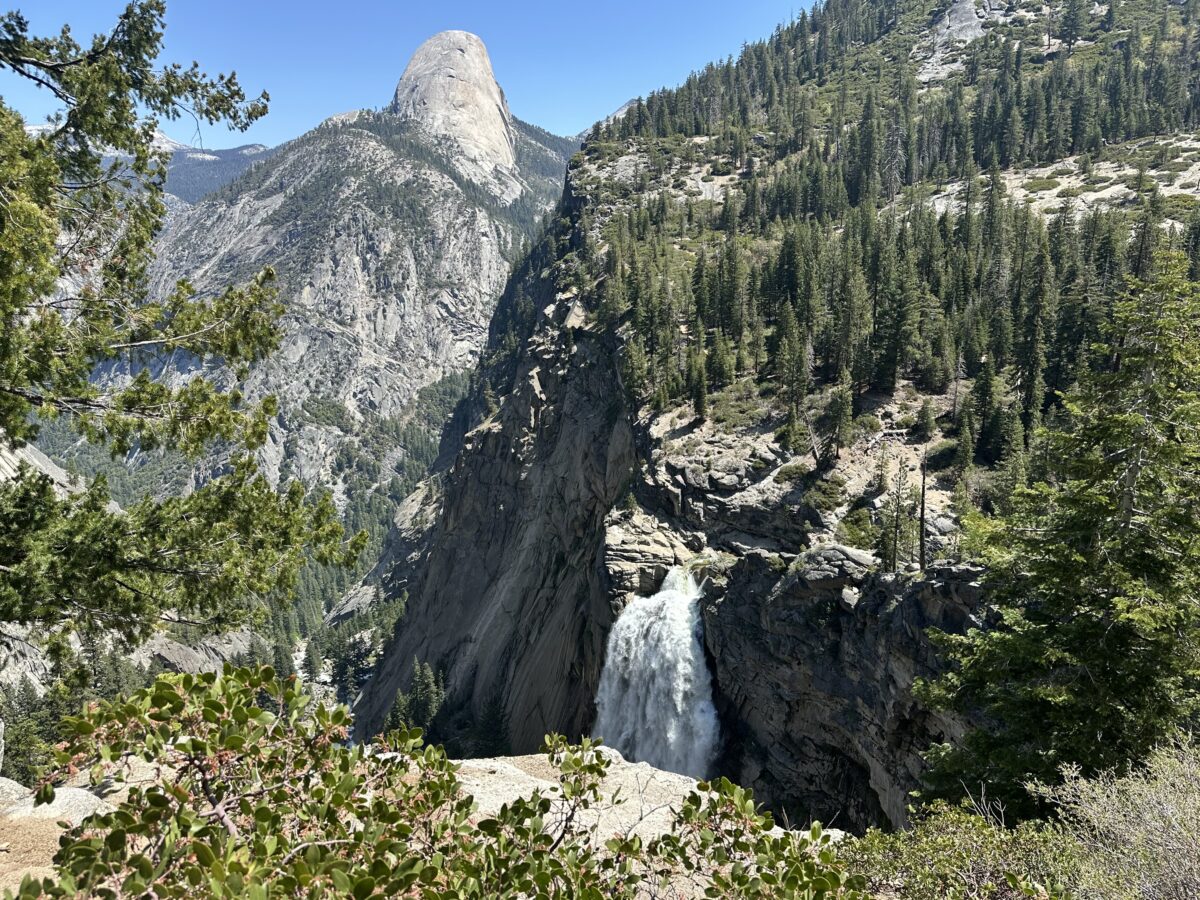Discovering Yosemite National Park
Yosemite National Park was one of the first national parks we visited on our journey to visit all of the parks. It was memorable. We arrived there after dark and woke up to see the majesty of Half Dome looming over us. Then we chose an “easy” day hike, and ended up hiking up to the top of Yosemite Fall. We can still remember how our legs were shaking after coming down. We could barely walk!
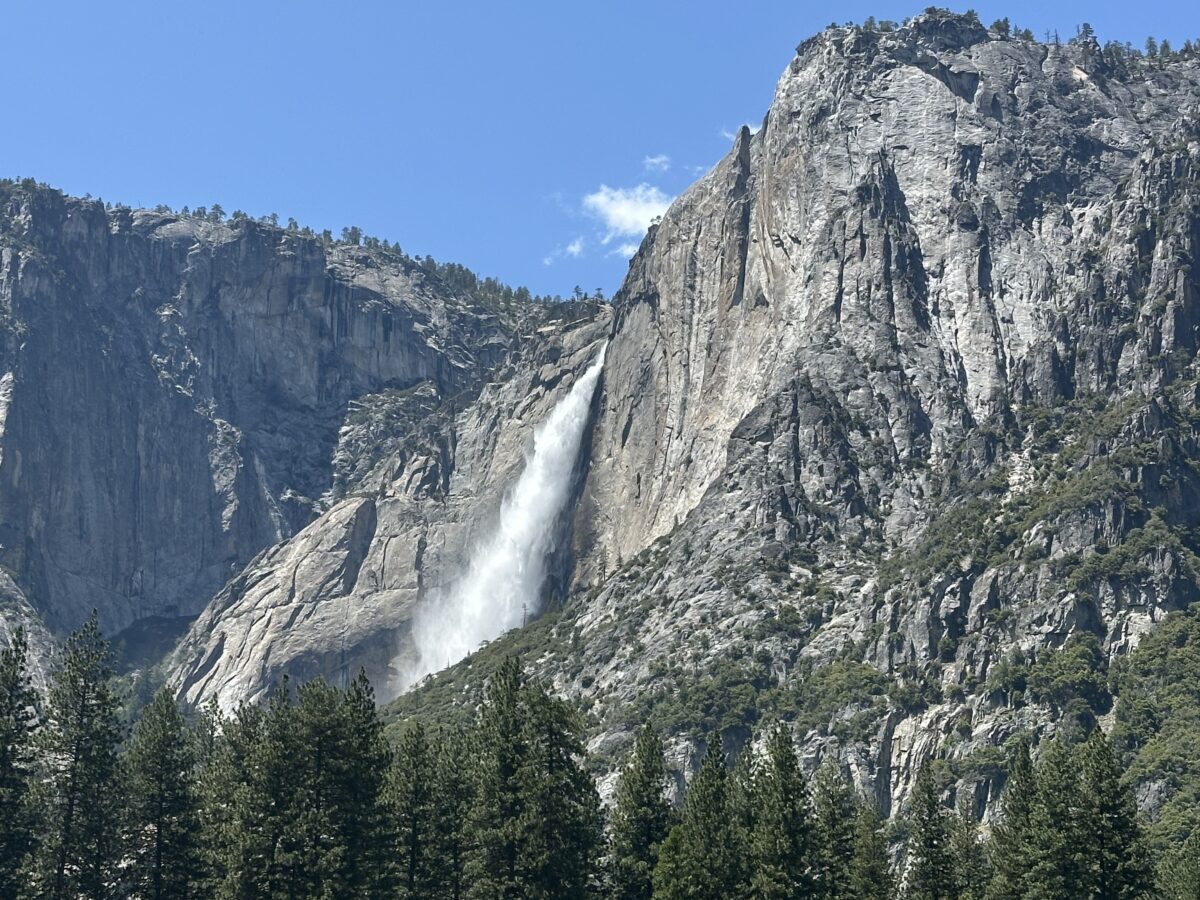
Our second visit was in the winter. Driving from Arizona, we didn’t even think about the mountain passes being closed. Instead of heading towards Bakersfield, California, and driving on the west side of the mountains, we went via Death Valley National Park and drove up the east side. That would have been fine in summer, but in winter, we ended up searching for a mountain pass that was open. Our destination was Mariposa Grove and we finally arrived at the lodge there well after midnight, on Christmas Eve! But it was glorious there in the winter, snowshoeing among the giant Sequoia trees. We highly recommend a winter visit. It is magical.
Since it had been over 20 years, we decided to revisit Yosemite this past Memorial Day but we were a bit concerned after hearing all of the stories about crowds. Don’t let this deter you. Yes, there are a lot of people, but it is a really big place. The main issues we found were delays at the entrance station, lineups to get food and lots of folks enjoying some of the easier trails. But if you plan ahead, get a peak hours reservation, and do things earlier in the day, you will be fine.
Once there, it is easy to see why Yosemite National Park attracts so many people. The giant trees, spectacular views, rushing waterfalls, and lush green valley. No wonder John Muir became such an advocate for preserving Yosemite, instrumental in getting it designated as a national park in 1890.
Something for Everyone
What we realized on this visit was that Yosemite has something to offer everyone – every age, ability and preference – with accommodations from camping to an upscale lodge. Whether you come for a day, or a week, you will surely be able to fill your time.
Yosemite is a big place – almost 750,000 acres – so it is impossible to see it all. Most people will plan to visit the main sites – one of the groves of giant trees and the amazing Bridalveil and Yosemite falls. It is hard to miss the majesty of The Sentinel and Half Dome, towering over the valley.
First stop on any itinerary should be the Welcome Center where you can learn more about the geology that formed the domes and valley, and get some suggestions about what to see and how to maximize your time.
Lazy Days
If it is some basic rest and relaxation you are looking for, this is the right place. The Merced River flows through the valley, offering lots of little beaches, places to picnic and small creeks to do some fly fishing. As the weather warms up and the river slows down a bit, lots of folks will get our their tubes and blowup boats to float down the river.
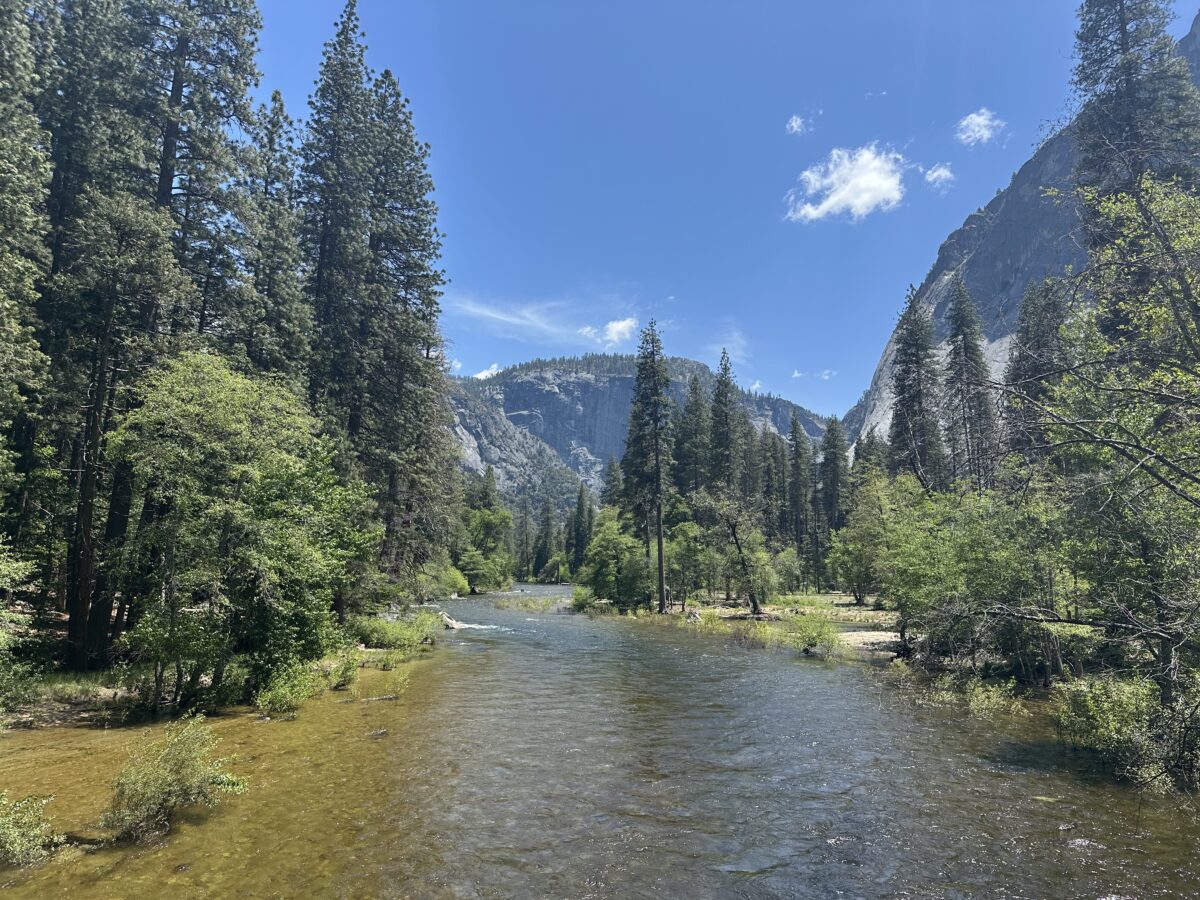
We enjoyed just sitting on the shore at our campsite, watching all the activity!

We also enjoyed leisurely walks from our campground. There is a 15 mile paved walking and biking trail that winds through the entire Yosemite Valley, taking you to all the sights including waterfalls, trails, museum, Ansel Adams exhibit and Indian village, plus restaurants and cafes. And the best thing… if you get tired, you can catch the Yosemite Shuttle and get back to where you started.
If you are lucky, you should see some wildlife – commonly deer and maybe black bears. The bears aren’t interested in humans, unless you are careless and leave food unattended. There are lots of bear boxes everywhere, so there really is no excuse for tempting bad bear behavior.
Take a Hike
If you are looking to get out and stretch your legs, there are tons of hiking trails, from easy to strenuous.
Shorter walks include an accessible path to Bridalveil Fall and Lower Yosemite Fall. There is also a lovely path through Cook’s Meadow and one to Mirror Lake, both paved. Optionally, you can continue from Mirror Lake on an unpaved 4.5 mile loop trail.

A bit more challenging is to hike to Vernal and Nevada Falls. The shortest is to go to Vernal Fall along the Mist Trail. It is only a 2.4 mile round trip, but beware, there is a 1000 foot elevation gain. Continuing on to take in the Nevada Fall will double the mileage and elevation!
Two very strenuous hikes from the Yosemite Valley are to hike to the top of Yosemite Fall (a 7.2 mile round trip with 2700 feet elevation gain) and the Four Mile Trail, which is not four miles. It is actually a 9.6 mile round trip with a 3,200 foot elevation gain.
One Way Hike
This visit we decided to try a one way hike, starting at the top at Glacier Point and making our way down into Yosemite Valley. Aramark offers a tour bus from Yosemite Lodge up to Glacier Point. Although many guests will sign up for the round trip, it is possible to buy a one way ticket up to Glacier Point and hike down. (A side bonus is all the fun facts you will hear from the bus driver on the way up. Did you know why the lichen is called wolf lichen? What do you think the record is for climbing Sentinel Dome?)
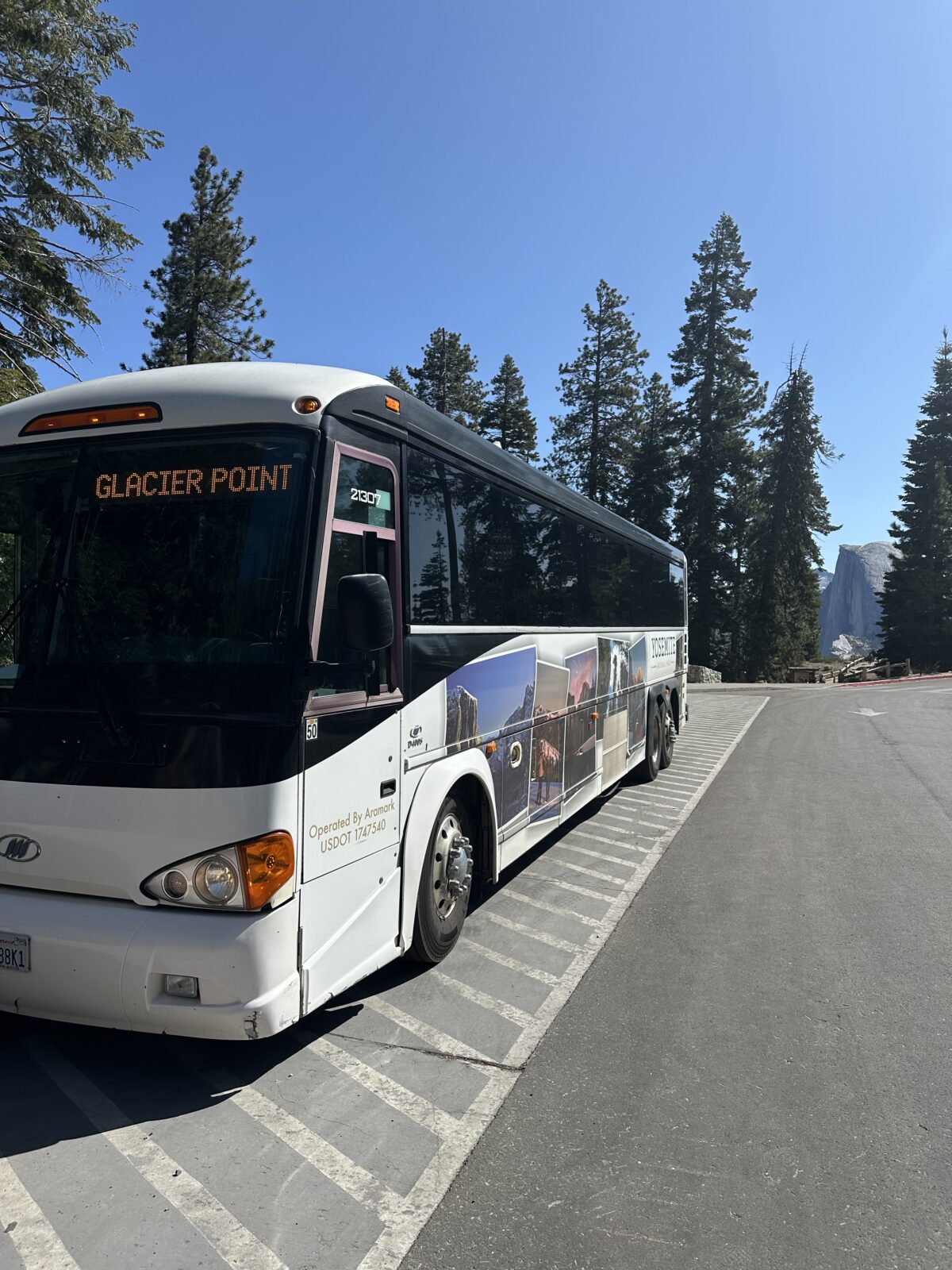
The drive up to Glacier Point is awesome, especially when someone else is driving! It is a curvy mountain road, originally built in the 30’s to take people up to lodges at Glacier Point. The lodges burned down, but there is still a small store and an overlook that offers amazing views out over the valley and a superb view of Yosemite Fall.
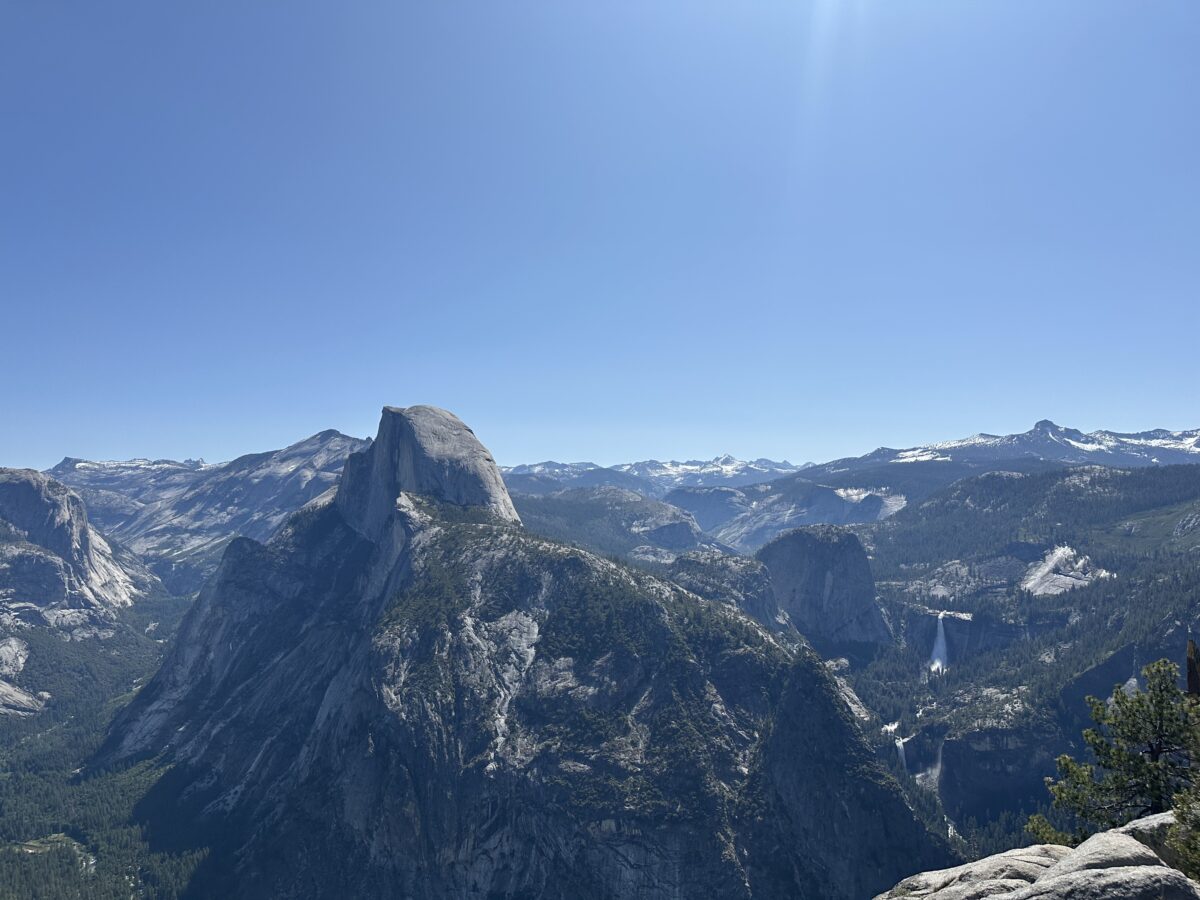
We hiked from there down to our campsite in Yosemite Valley, via the Panoramic Trail to the John Muir Trail to the Mist Trail – 11.5 miles in all. It sounded easy, but even though it was mostly downhill, you do climb at least 1200 feet.
The bus doesn’t let you off until mid-morning, so the start of the hike is pretty sunny and hot. Be sure to bring lots of water and sunscreen.
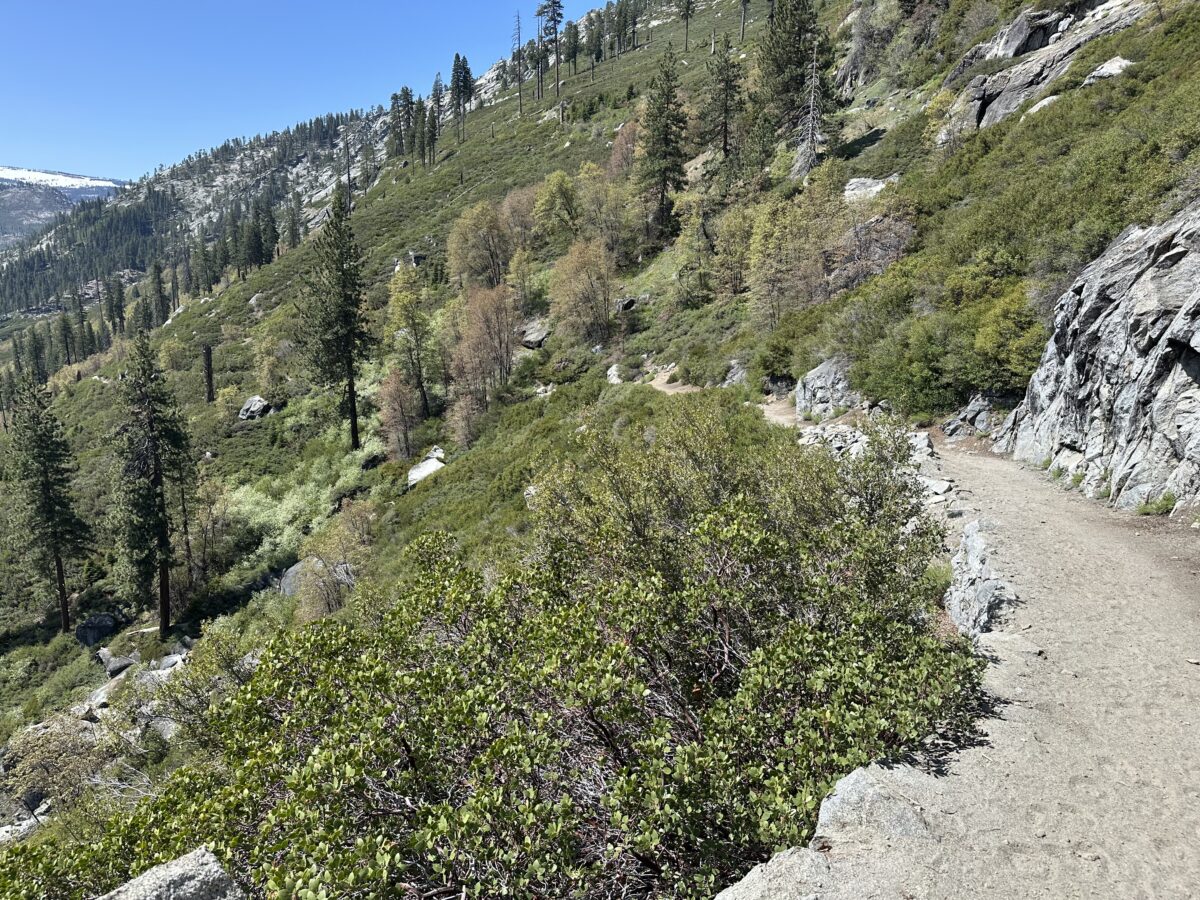
The hike begins with long switchbacks as you wind your way down to the first waterfall – Illiloutte Fall. The views out over the valley and Half Dome were amazing. It was a great place for a picnic, on the flat rocks upstream from the waterfall.
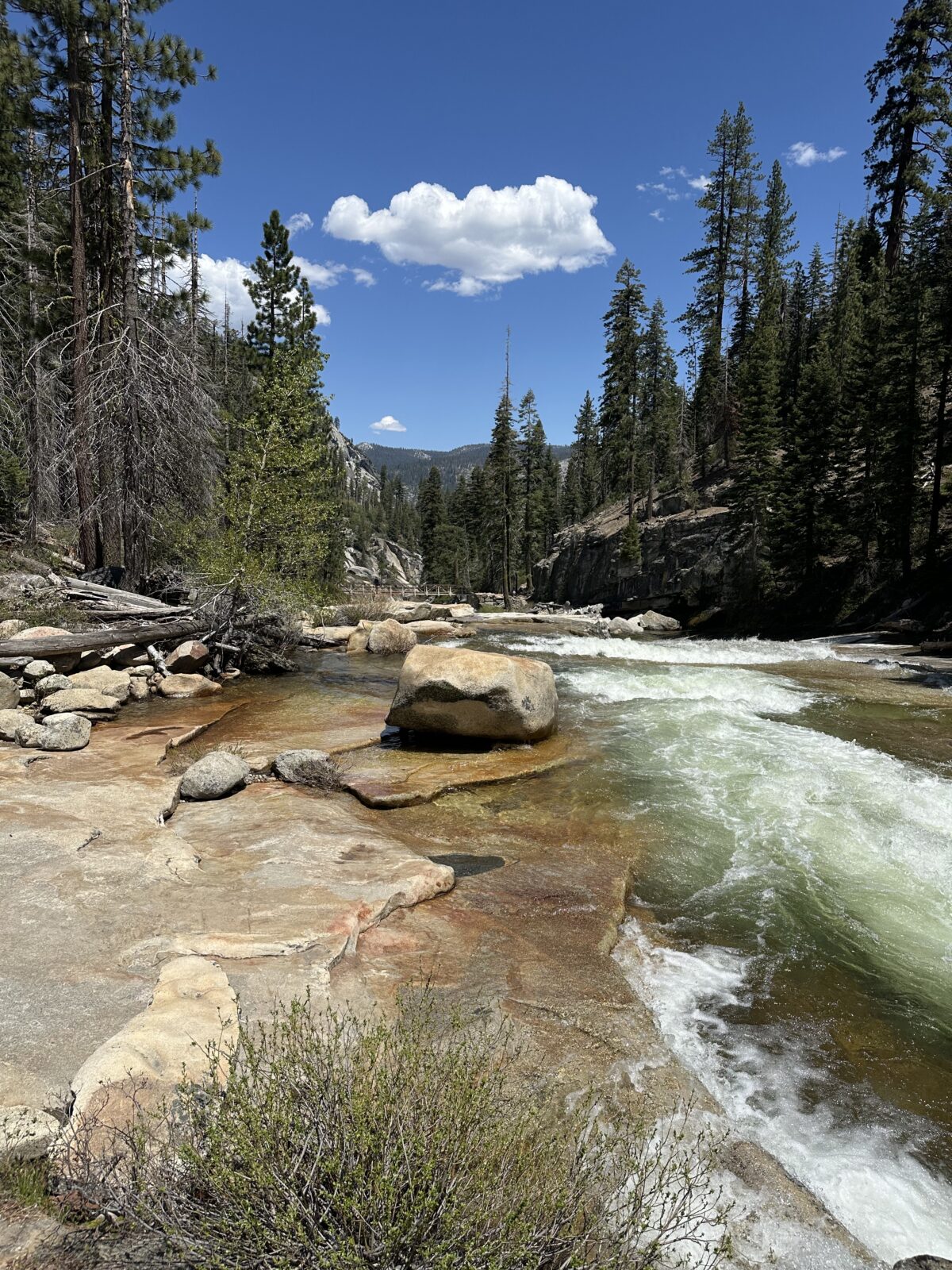
But be careful. This water is moving fast! Unfortunately people have died by venturing too close.
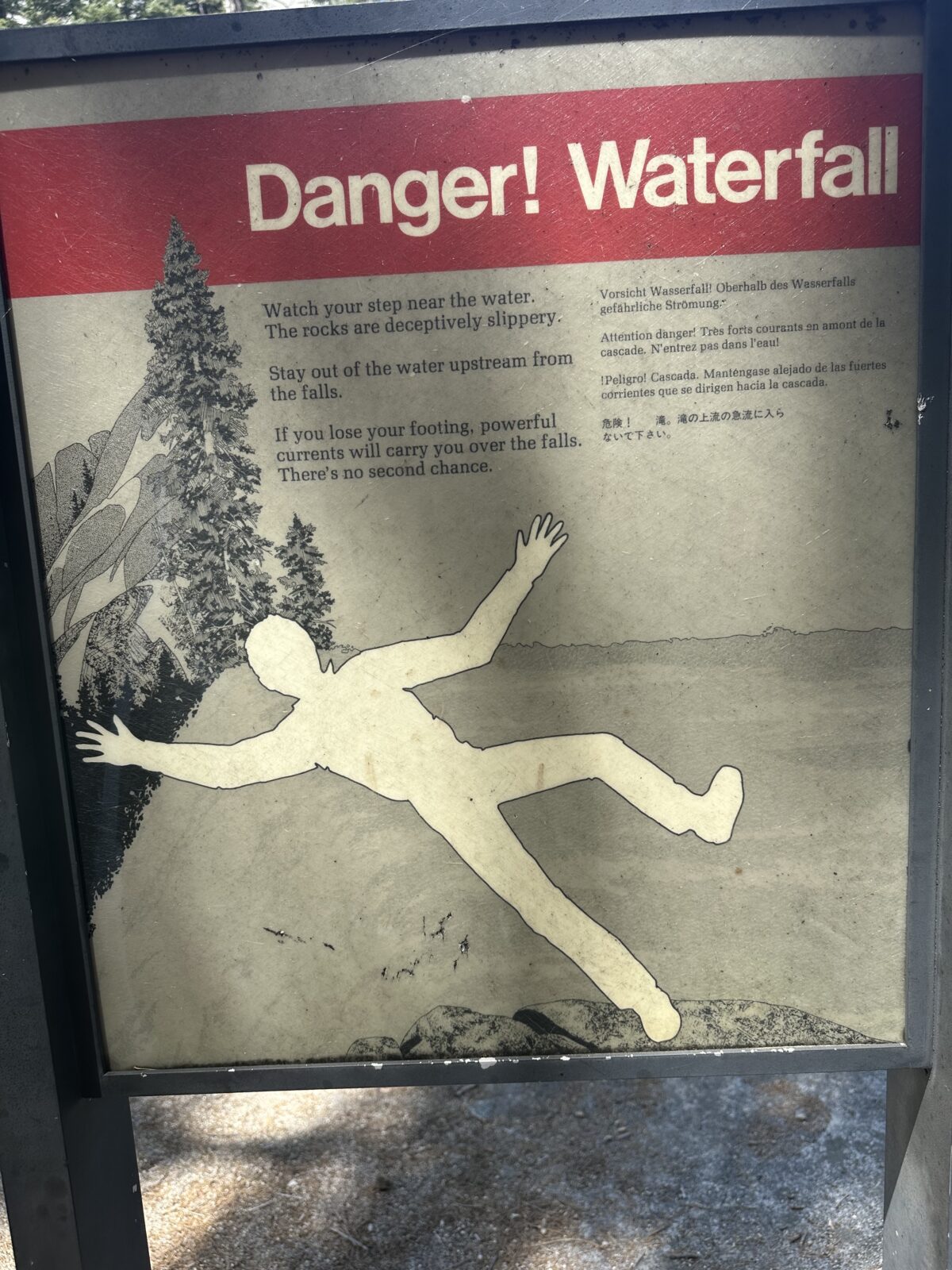
As we walked along, there were a ton of birds. One of our favorites was the Nashville Warbler. It has such a sweet song. Along with the birdsong, we kept hearing this weird noise. It sounded like someone trapped inside a hollow log and hammering on it – Boom, Boom, Boom. We were stymied as to what it was, but when we asked the ranger later, he identified it as a Sooty Grouse. (That’s why we hope the National Park Service keeps experienced rangers on staff. They know so much about the parks; so much more than the young volunteers.)
After the first waterfall, the trail goes up and at one point you are walking on the edge, looking down into the valley. We were thankful when the trail started going down hill again! As we wound around the mountain, the views changed. Initially we saw the front of Half Dome. Now we could see the back part, including where folks can hike up.
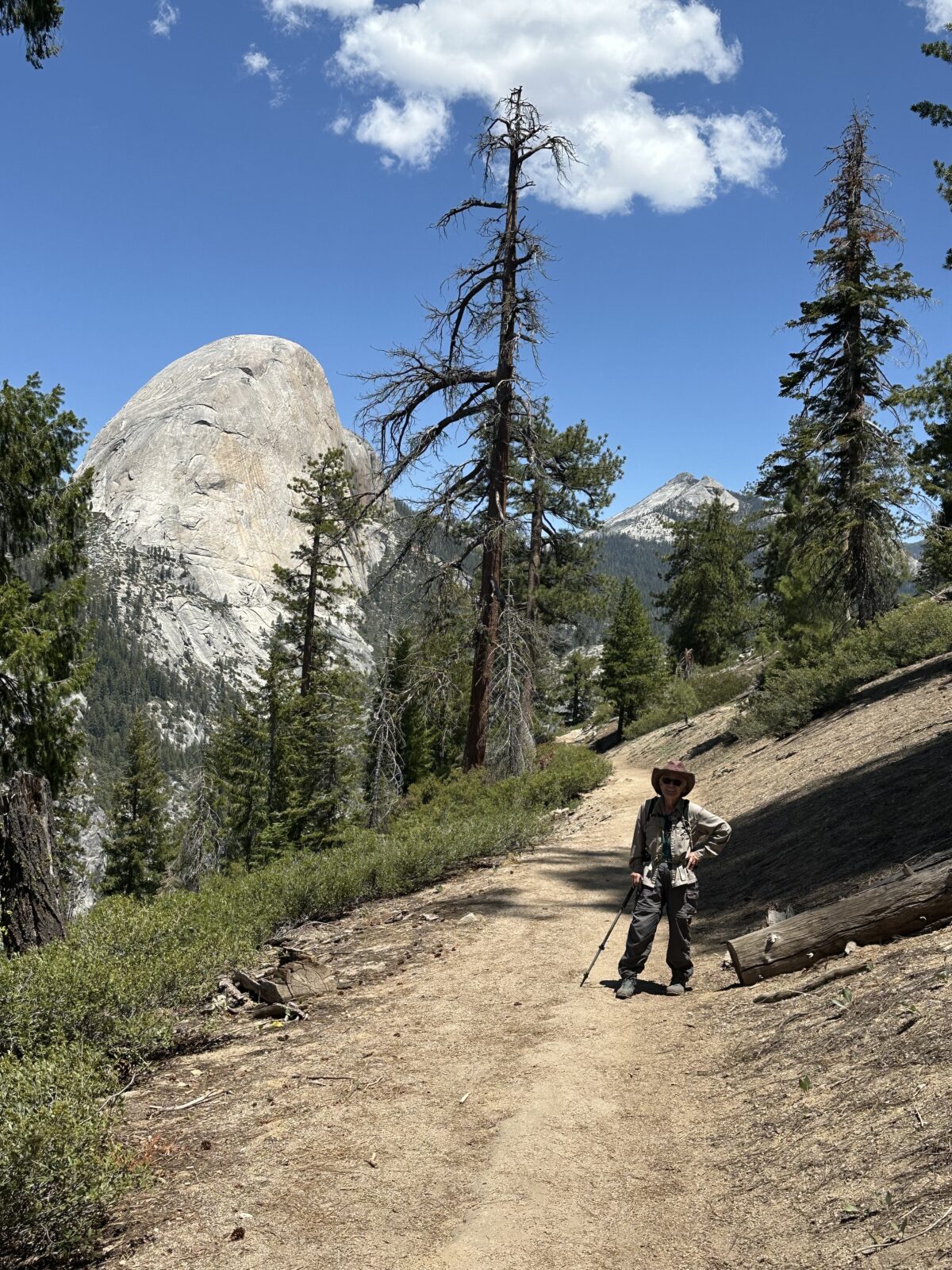
The trail was lovely, winding its way through the forest. The best thing was that there were only a few people hiking. Just enough to feel like you are not totally alone in the wilderness, but few enough that you had lots of solitude.
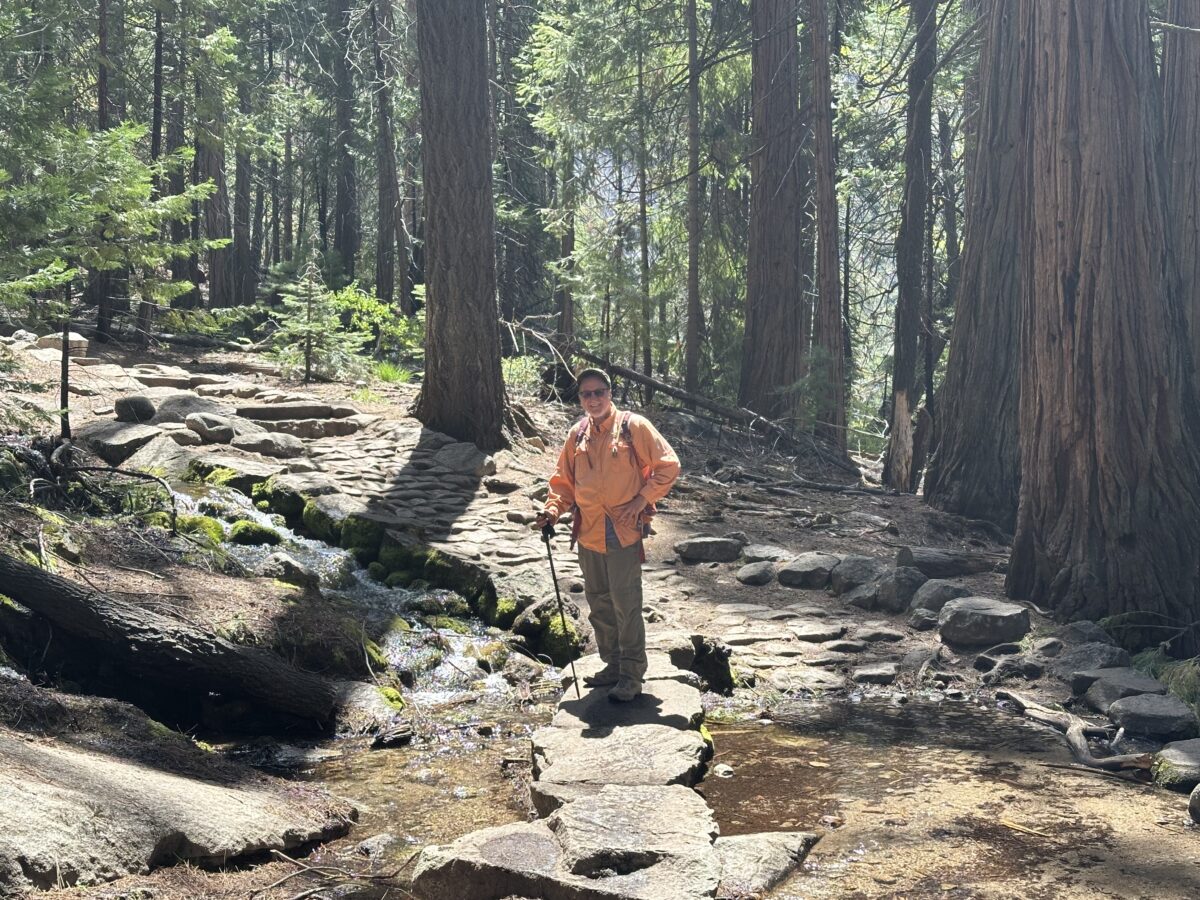
Finally we came to Nevada Fall. It was lovely, but much more crowed. From there we had the option to go down the Mist Trail but we heard that the steps there were very wet and slippery, and that there were lots of hikers.
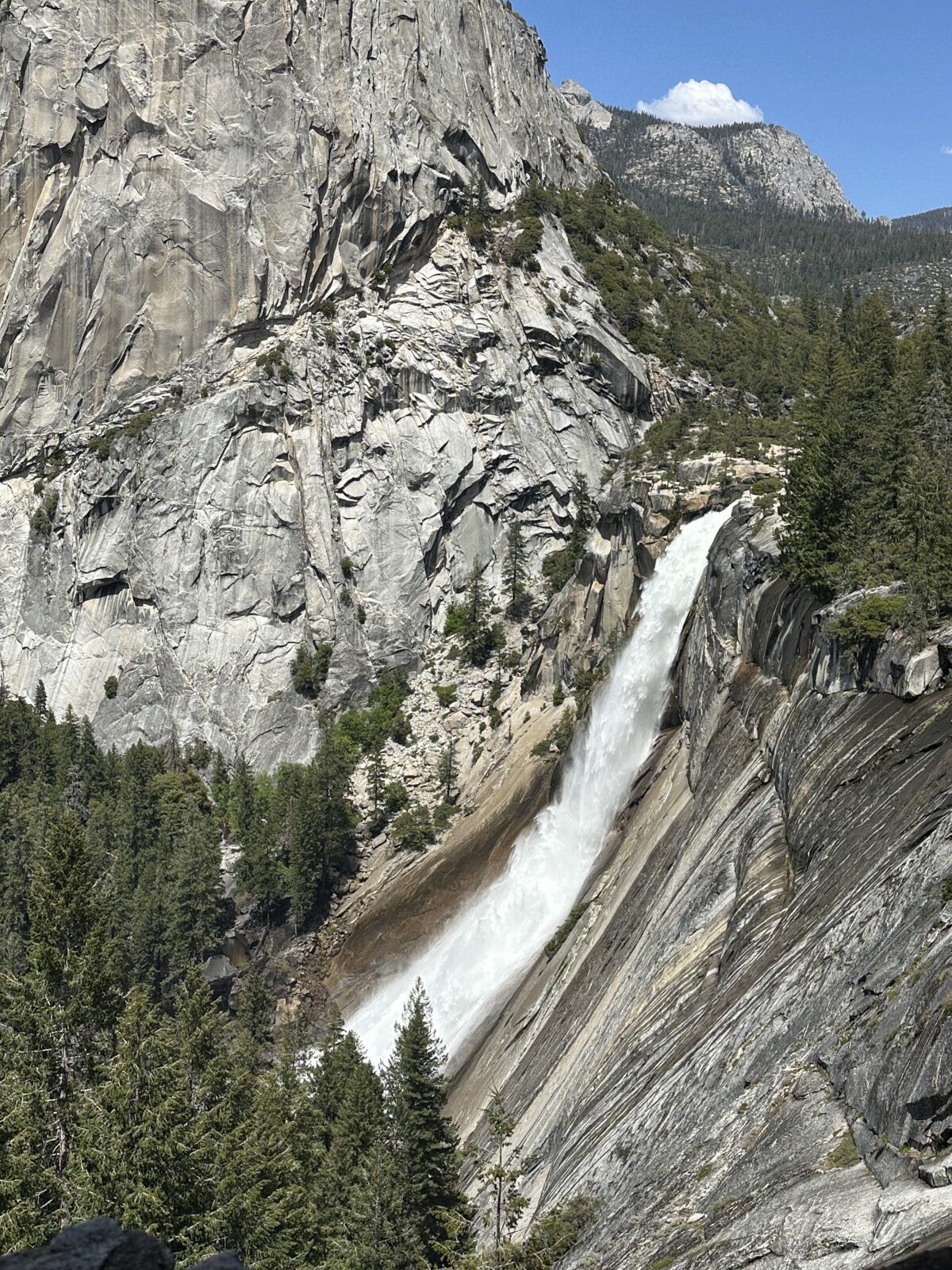
We decided to take the John Muir Trail. That was a great choice. It was a bit longer, but it was a fun trail. At one point, we walked along a cliff with a rock wall to one side and a sheer drop on the other. The path sounds scary, but it was paved and you were protected from falling by a solid stone wall.
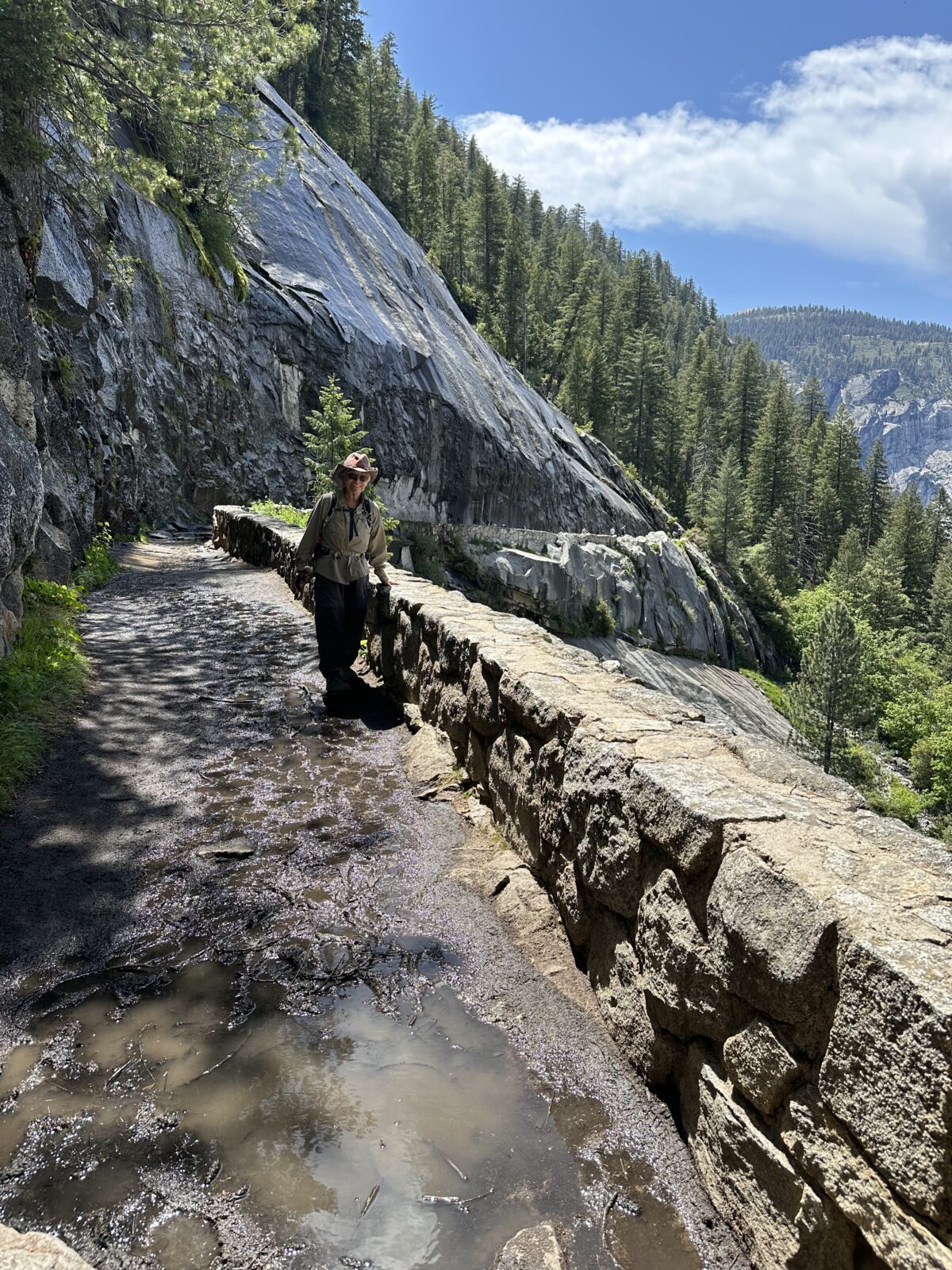
Along the way we got “kissed” by the water seeping from the mountain.
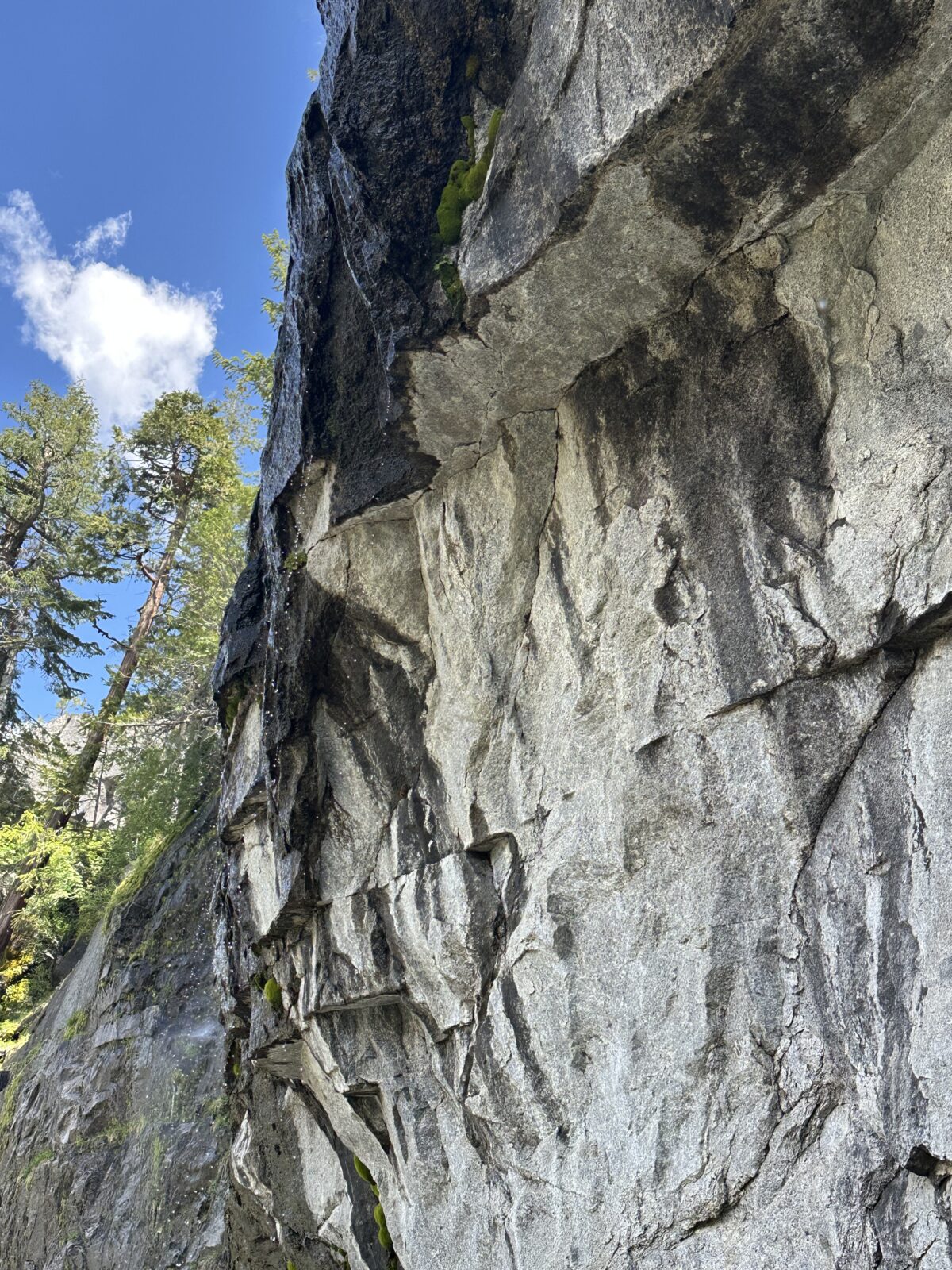
The view back to the falls were lovely. You could hear the rushing water for miles. In fact, at one point we could see Yosemite Fall across the valley as we listened to Vernal and Nevada Fall.
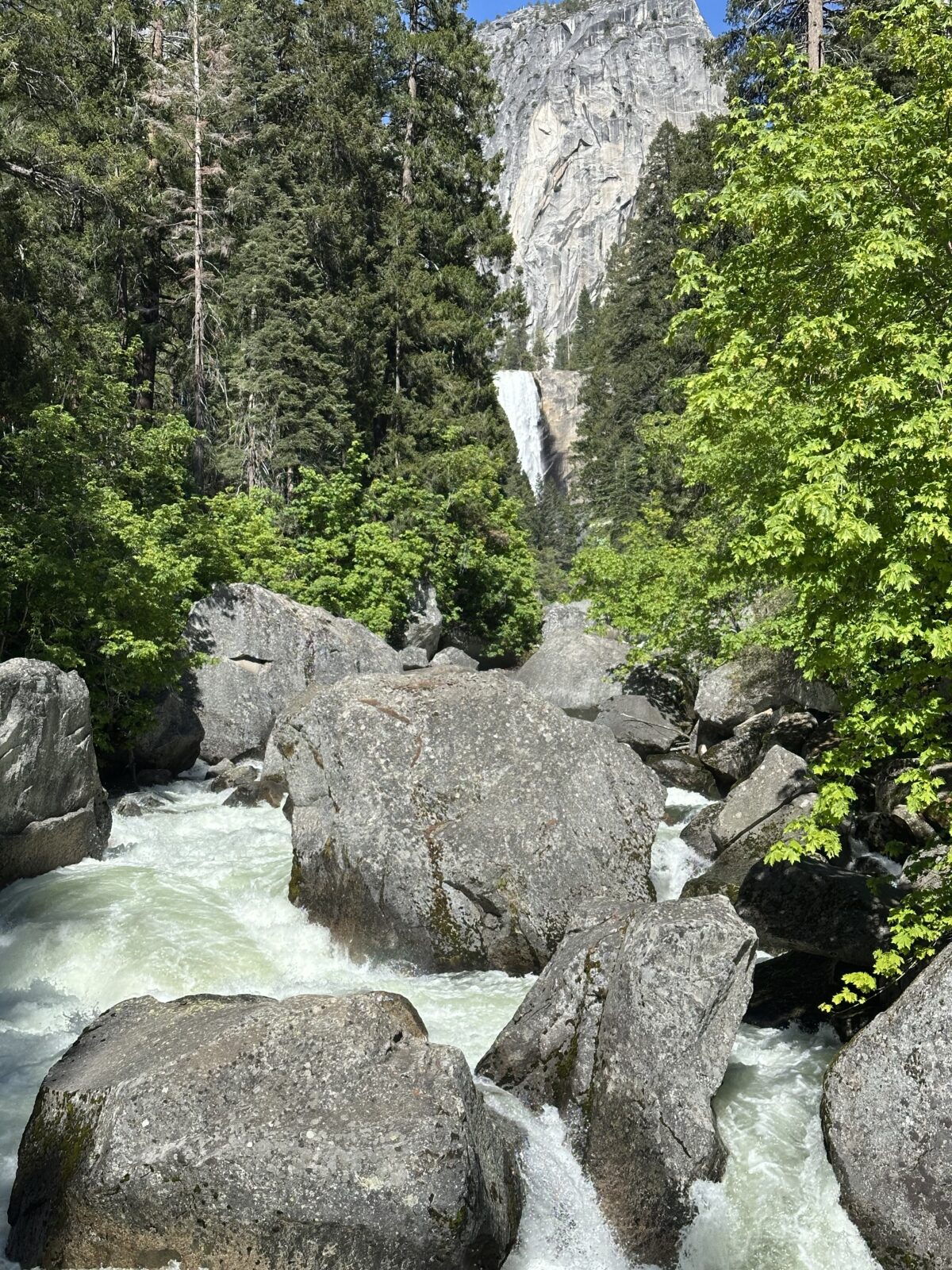
It was a long hike and a full day, but totally worth it.
Mountain Passes
Tired but relaxed, we finally had to leave Yosemite Valley and make our way home to Arizona. But this time, the nearest pass was open. We were able to cut hours off our journey by going over Tioga Pass.
Early in the season, nothing was open yet but there are a bunch of campgrounds and trails leading to high meadows and mountain lakes. The drive goes right by Tenaya Lake. It was gorgeous.
When the snow clears, it is possible to walk around the lake. This wasn’t really accessible yet, but there is a mile long sidewalk that goes all along the lake, offering wonderful views of the snow capped mountains and their reflections in the lake. There is also a nice picnic area there, but the lake was so full that a couple of the tables were under water!
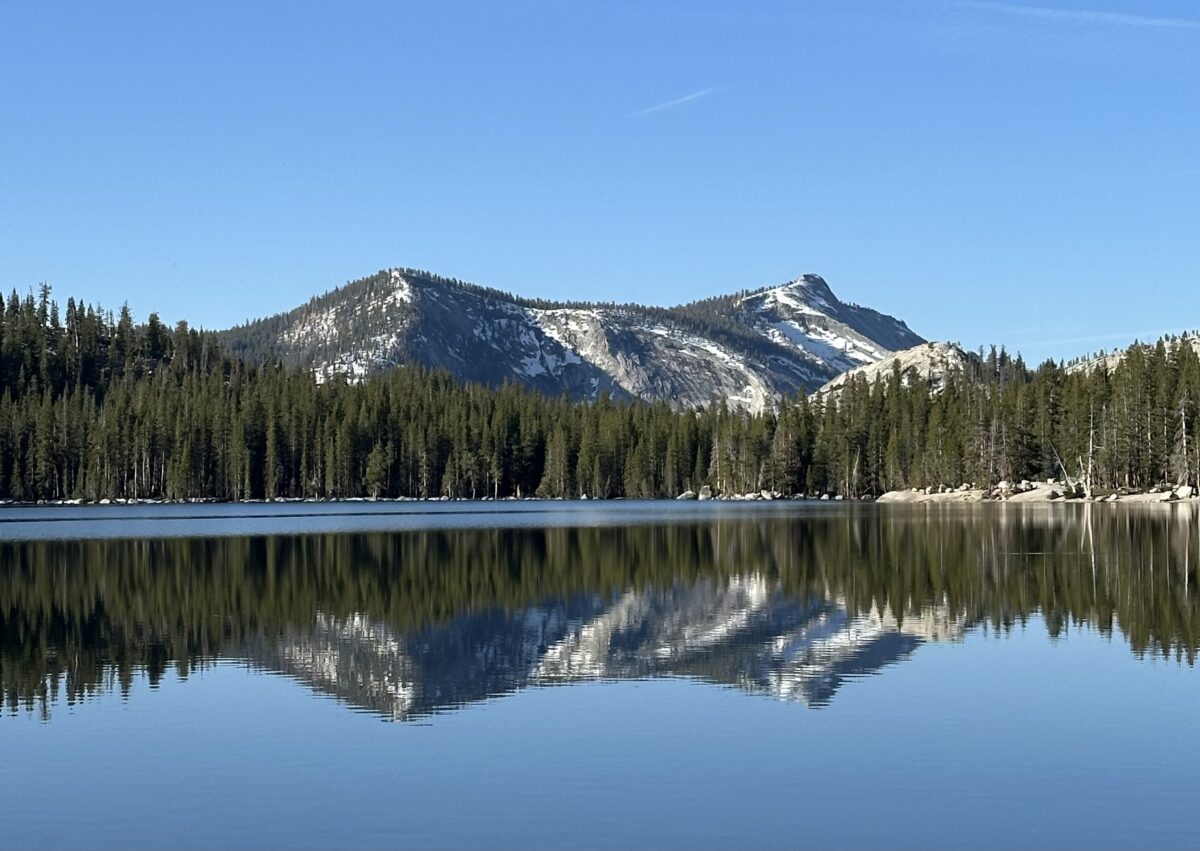
Another stop on the road was Olmsted overlook. From there, we got a totally different view of Half Dome. With binoculars you can see lines of people making their way up the chain to the top.
On the east side of Tioga Pass, the drive continues through the Inyo National Forest along the Lee Vining Scenic Parkway. What a great drive!
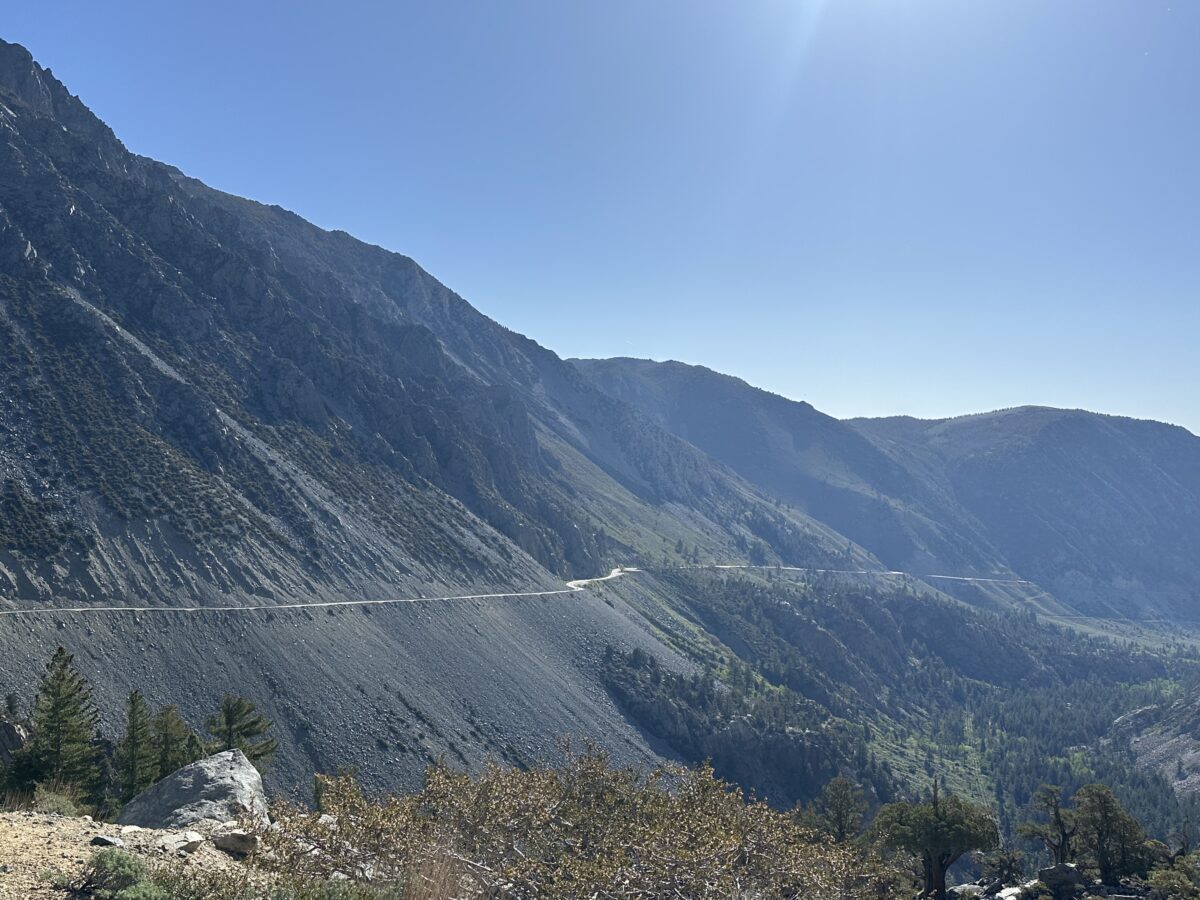
It ends at Mono Lake, famous for it’s tufa rock formations. That too is well worth a quick visit.
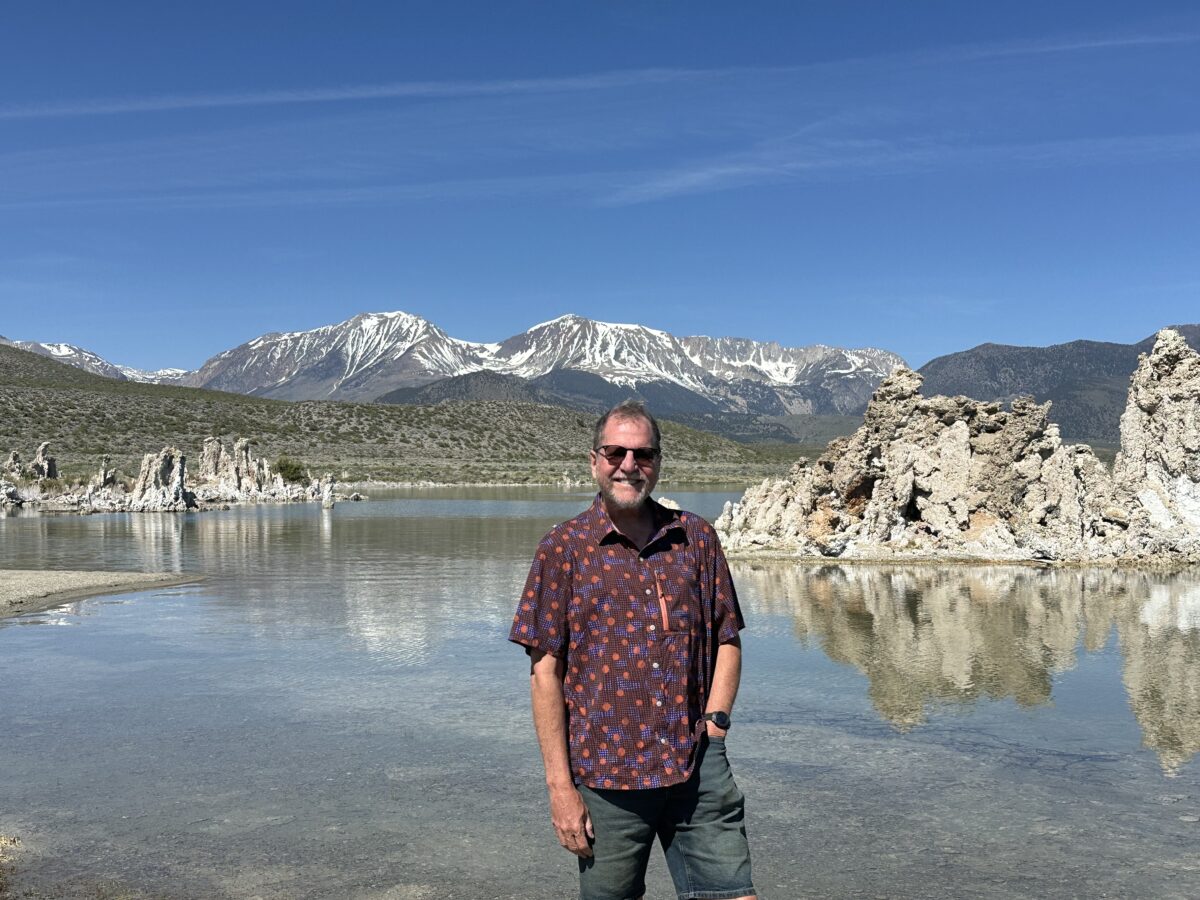
Revisiting National Parks
Every time we go back to a National Park we find something new. This certainly was an area of Yosemite National Park that we had not seen before, and probably an area that will be worth coming back to.
As always, our National Parks do not disappoint. They continue to have more to offer!
Need Help Planning Your Visits?
If you would like to explore this or other National Park Units, but need a bit help in the planning, please give us a call at (480) 609-3978. We are happy to offer customized trip planning.
#SeeAmericaFirst
#FindYourPark
